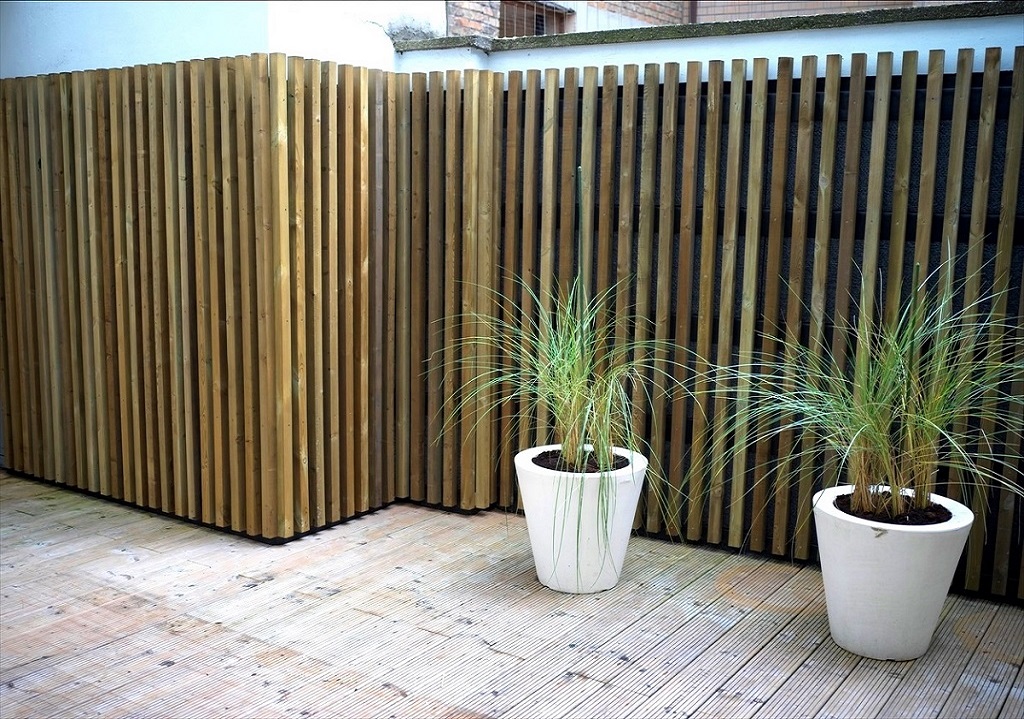Relaxing outside during the summer while enjoying the warmth is a wonderful thing. In the winter period, many people also like to have a warm spot outside, for example in the shape of a hot tub. Following our seasonal articles about the ‘Soundproof Fence’ and ‘City Garden Outdoor Acoustics’, the hot tub constitutes the topic of this next article.
Hot tubs, or jacuzzis, can be divided into two types: types that contain a built-in pump and types with an external pump. In case of the latter, the pump can be located right next to the bath or inside a shed. In any case, almost all baths create noise problems caused by the pump. These are usually not or not sufficiently insulated, thereby causing a noise problem. This is problematic for both neighbours, and those enjoying inside of the hot tub. A good place for a hot tub or jacuzzi is in a corner of the garden where sound-absorbing fences are placed. In this way, at least sounds from the bath, pump and speech are reduced.
Isolating contact noise from the pump
The contact sound of the pump is usually perceived by the environment as a hum, especially if the pump touches the neighbour’s house (if this is not the case, you can skip this part of the article). In order to reduce this, you need to decouple the pump or make it 'float'. You can do this by mounting the pump on a heavy plate of MDF or, even better yet, a heavy concrete tile, by means of brackets for example. Make sure that the plate or tile is about 10 centimetres in terms of length and larger than the pump when it comes to its width, providing optimal stability. If the pump is fixiated on such a plate, vibrating off the plate over time is effectively prevented.
Mount four pieces of Regufoam type D220 with a thickness of 25 mm underneath this plate, with the pump placed on top of it. These pieces should have a size of 100 x 100 mm. Mount one particle under every corner of the plate. When it comes to very heavy pumps, it may be necessary to mount one or two additional pieces in the middle as well. Now that the pump stands on resilient material, it is important that no clearance can occur on the pipes, which could cause leaks in the long run. A flexible pipe between the pump and the hot tub prevents such leaks.
Isolating airborne noise from the pump
The housing of a pump is usually made from light material such as plastic or plywood. The lack of mass (weight) of such a housing (or cover) has a limited insulation value. Here are two possibilities to enhance it.
- Make your own pump housing
Often, the housing of hot tubs, jacuzzis or pool pumps cannot be adjusted, for example due to a lack of space. In those cases it is best to make a housing by yourself from heavy sheet material such as moisture-resistant plywood (the thicker and heavier, the better!). Make a housing that contains more than 10 cm of free space around the pump. Pay attention to the thickness of the absorption material that you use. The inside of the housing should be equipped with Merfocell PU, preferably with a thickness of 40 mm. A step-by-step plan for making a housing can be found on the tips page ‘Step-by-Step Plan Appliance Housing’. - Insulating existing pump housing
Insulating an existing housing is performed by equipping the panels (or parts) of the housing on the inside with Isomat TS. You glue, and, if possible, screw the Isomat plates against the inside using contact glue. Then add an absorption material to the Isomat. It is best to choose the moisture tight Merfocell PU (finishing seams and cracks with Acustitape). A material thickness of 40 mm has an optimal price-to-result ratio.
Points of attention
Always make sure there is sufficient ventilation in the pump housing. If necessary, inquire the manifacturer to find out more details. We recommend caulking any seams or cracks to avoid sound leaks. When gluing the Isomat, make sure you're working with a clean and grease-free surface. Are you going to decouple the pump? Then make sure that it is stable and that there is no play on the pipework.
Questions? 
Do you have any questions about this topic? Please contact us, we will be happy to answer your questions as soon as possible.

 Sound Absorption
Sound Absorption  Sound Insulation
Sound Insulation  Vibration Isolation
Vibration Isolation  Silent Ventilation
Silent Ventilation  Accessories
Accessories  Thermal & Acoustic Insulation
Thermal & Acoustic Insulation 